Trail Introduction
The road winds up the mountain for about two kilometers (opposite of the Xipan Helmet Check-in / Check-out Service Station at the junction towards Buluowan). Buluowan was once inhabited by the indigenous Taroko (Truku) people, and the name means “tracking prey land” in their language. Buluowan is comprised of two large, level river terraces that extend out from the sheer mountain flanks 160 meters above the Liwu River. Mountain Moon (Shanyue) Village, Taroko Village Hotel, on the upper terrace, has food, lodging and conference facilities. The two terrace differ in elevation by about twenty meters and are connected by a stairway/trail that begins from the second floor balcony (at the lower terrace) next to the snack bar/souvenir shop. The two Buluowan scenic trails are located at the Lower Terrace. One is the Meander Core Trail, the other is the Buluowan- Swallow Grotto Trail (closed due to the trail damages) directly connecting to the Provincial Highway 8. Walking westward about 800 meters you can reach one of the most popular places for viewing the unique geology of Taroko gorge- Swallow Grotto (Yanzikou) trail.
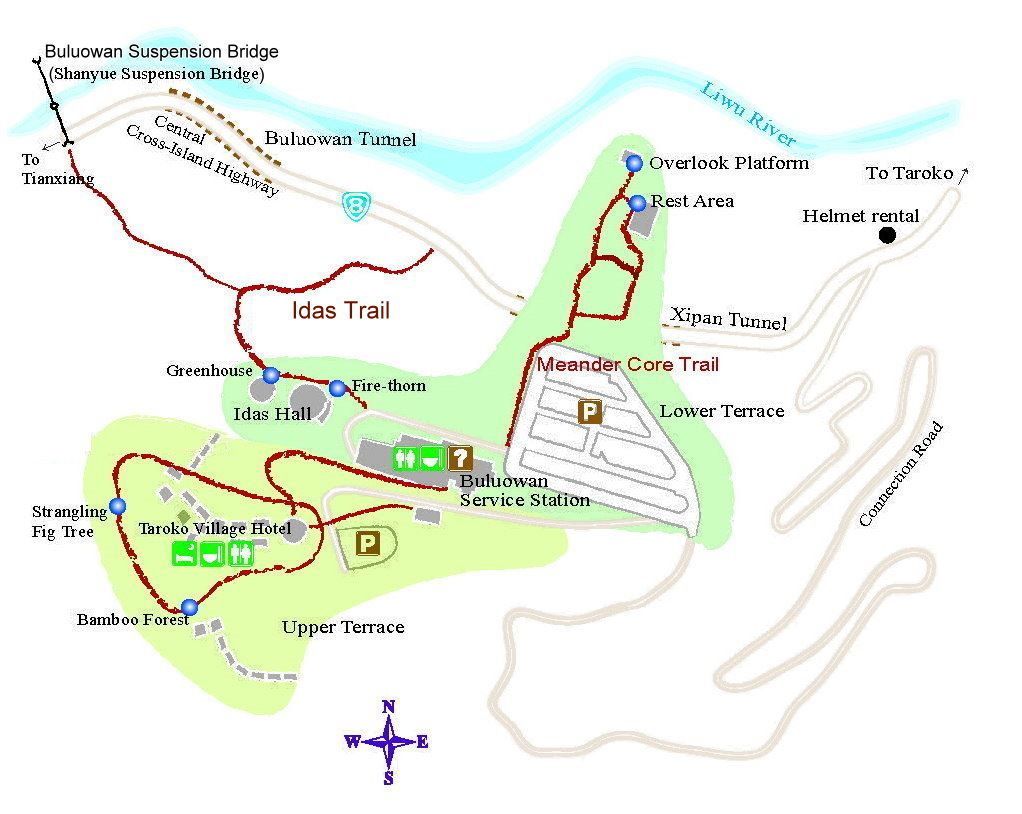 Buluowan Map
Buluowan Map
Culture Heritage
Relative to the geologic formations in and around the area, people have lived here only a very short time. The Truku people settled the area only about 200 years ago. However, there are traces of people having lived in the area much earlier. Professor Chen Jhong-yu of Academia Sinica, during archaeological excavations in the area, discovered pottery chards, and implements made of stone and iron that indicated the area was inhabited by people whose position on the cultural spectrum is late Neolithic or just on the cusp of the Iron Age.
Sometime in the 18 century ancestors of Truku people living in the mountains of the western part of the Central Mountain Range came to the Liwu River Watershed in search of new hunting and farming lands. They gradually spread out and established as many as 79 villages throughout the area now encompassed by Taroko National Park, including settlements on the Upper Terrace and Lower Terrace of Buluowan. One purpose for which the Buluowan Service Station was established by Taroko National Park in 1991 was to exhibit the indigenous culture of the past through displays of Truku crafts and tattoos, ramie cloth and Truku weaving technology.
Cloth weaving and rattan basket making are two technologies at which the Truku people excelled and were the source of pride and dignity of nearly every man and woman. Weaving of baskets and cloth was an integral part of traditional society and some fine examples of both will be found in the Exhibition Hall of Lower Terrace at Buluowan. The activity of weaving in Truku society was clearly delineated between men and women. Women did all the weaving of cloth and all of a family’s needs for cloth, whether for clothing, blankets or other items, depended on the women. The materials for weaving were traditionally comprised of ramie that has been formed from the plant Boehmeria nivea (L.) Gaudich. of the Urticaceae family after treatment by peeling, boiling, drying and kneading. Diamonds (which represent the eyes of ancestors) were favored as decorative shapes, with the colors white, red and black used to produce fine intricate patterns.
Baskets weaving was the exclusive domain of Truku men. They used a mature rattan, which after it is dried, the outer layer of flesh is stripped (while it was still wet). Basketry on exhibition at Buluowan include a work basket, plates, and all sorts of other implements and containers. The design of the rucksack-like work basket is a good example of the technology that comes from generations of living in the mountains. The basket is designed so that the weight can be borne by a person’s shoulders as well as their head through the use of a tumpline.
Geologic Introduction
The Buluowan area was long ago the channel of the Liwu River. When mountainsides collapsed downstream blocked the river, a lake was formed. The slowed flow of water resulted in large deposits of gravels and mud. Eventually the landslide-dammed lake filled with water and the overflow cut through the natural dam forming a newer, shorter course. Further uplifting and deposits resulted in the meander core and the upper and lower river terraces we see today.
Ecological Environment
In the area around Buluowan one meets the culture of prehistoric people and present-day Truku (Taroko), unique botanical and geologic phenomena, and even the National Park’s endemic plant center where research on native plants such as the Formosa Lily, Taitung Firethorn, Paired Flower St. John'swort (geminiflorum Hemsl.) and Golden Spider Lily is conducted. So whether your interests are related to geology, ecology or anthropology, you will find plenty to do at Buluowan.
Formosa Lily
The Taiwan Lily is probably the main attraction for Spring visitors to Buluowan. Every year from mid April to mid May the much of the Lower Terrace and the area around the entrance to the Meander Core Trail is awash in the white spectacle of Lily’s annual performance. The Formosa Lily is likely to be seen from sea level to high mountain valleys at elevations of up to 3000 meters. Whether the soil is that of a rich level field or scarce and thinly distributed in the cracks of a rock cliff, the Formosa Lily will find a way to survive.
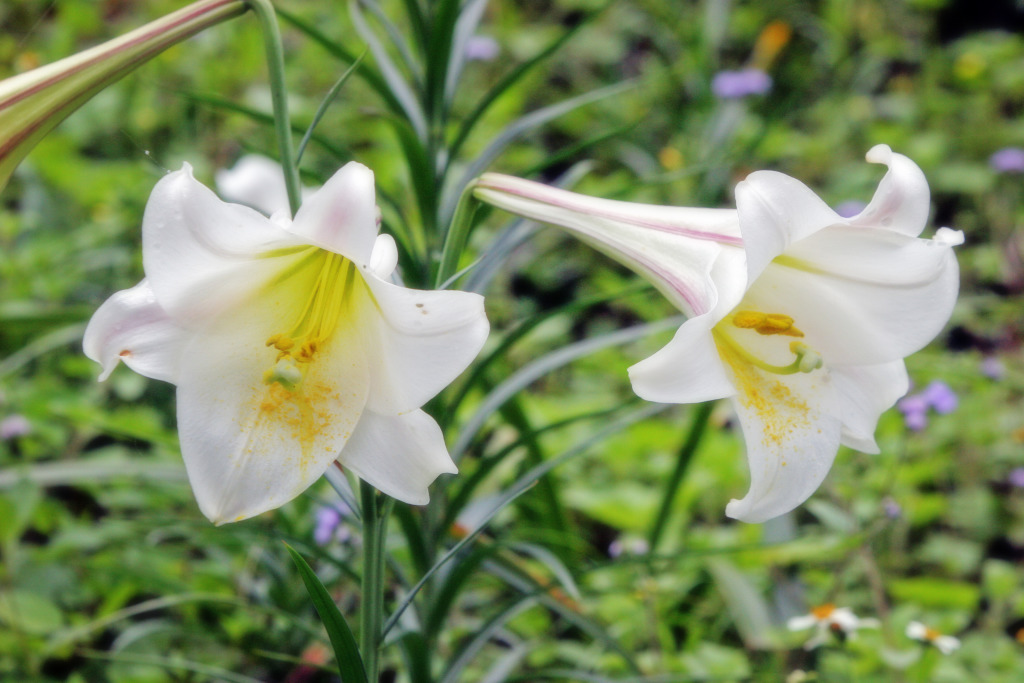
Formosa lily

Taitung Firethorn
Meander Core Trail (295 meters)
The Meander Core Park lies at the edge of Buluowan’s lower terrace. It was formed by deposits, primarily of gneiss by the Liwu River over eons of development activity. The raised boardwalk takes you in a complete circle of the core and provides outstanding views from platforms overlooking the Liwu River and Xipan Dam over far below. In addition to the rich geology, plants and insects are in great abundance. If the season is right you can enjoy the Formosa Lily (in Spring), or Golden Spider Lily (in Autumn, mid September to mid October).
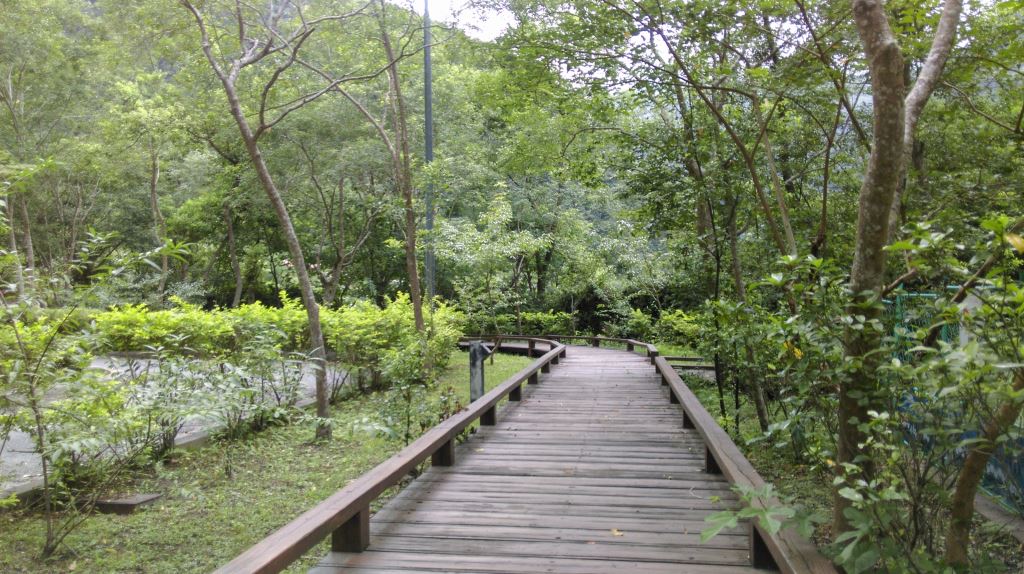
Wooden Boardwalk Formosa lily
Rest Area
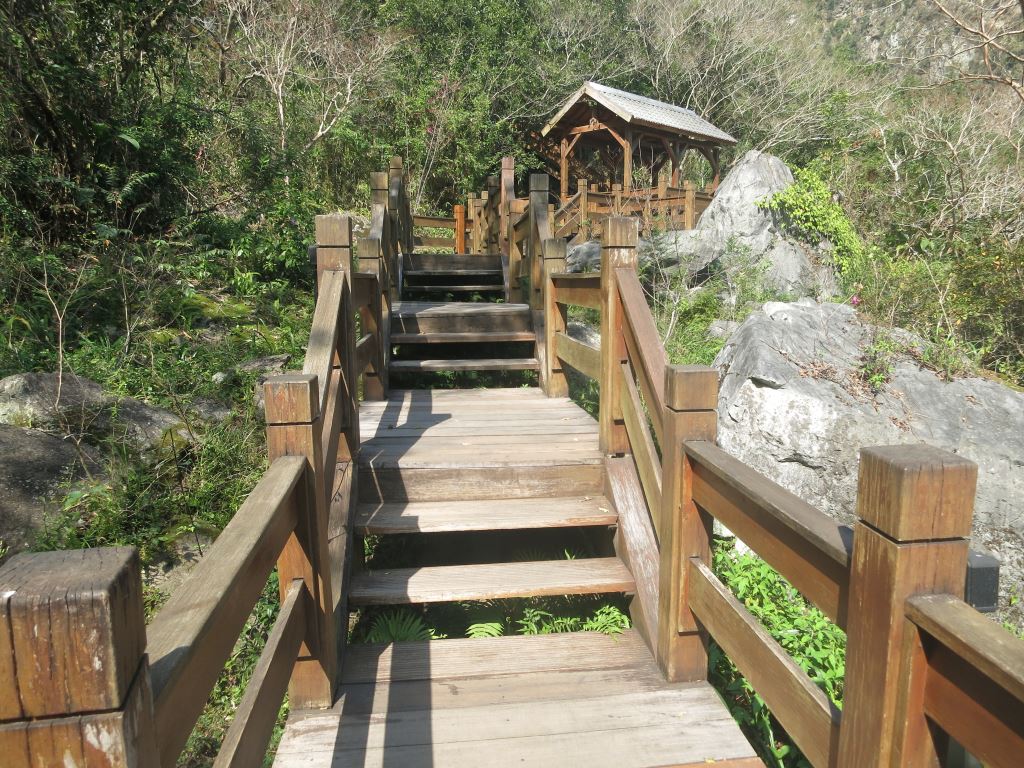
Overlooking Xipan Dam
The Meander Core trail lies at the edge of Buluowan’s lower terrace. It was formed by deposits, primarily of gneiss by the Liwu River over eons of development activity. The raised boardwalk takes you in a complete circle of the core and provides outstanding views from platforms overlooking the Liwu River and Xipan Dam over far below. In addition to the rich geology, plants and insects are in great abundance. If the season is right you can enjoy the Taiwan Lily, and for those who need a dose of sadness, the aerial view of the Xipan Dam from the trail are among the best in the park.
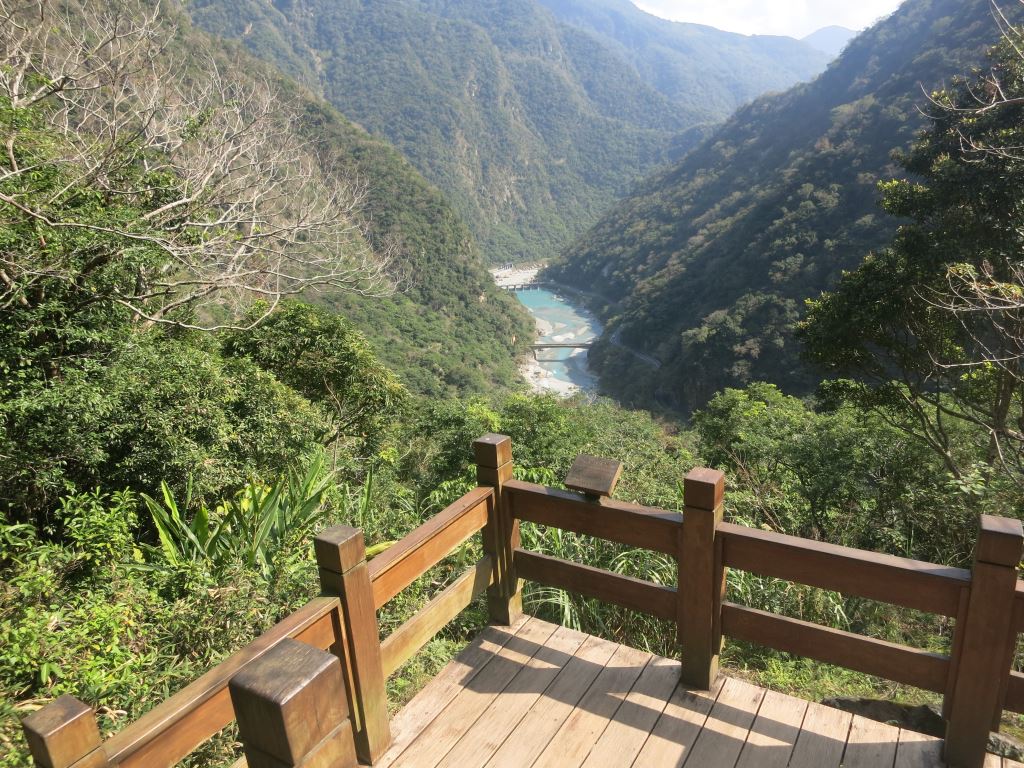
Overlooking Xipan Dam from the Lower Terrace Meander Core Trail at Buluowan
Idas Trail (400 meters)
Located at the lower terrace of the Buluowan Recreation Area, the Idas Trail is a mini-type trail. The old name was Buluowan- Swallow Grotto Trail. The Idas Trail connects the two recreational attractions of Buluowan and Yanzikou (Swallow Grotto Trail). The public can take a bus to Buluowan. While at Buluowan, visitors can overlook the Yanzikou Gorge area from the Buluowan Suspension Bridge and enjoy the fantastic scenery of Buluowan. Departing Buluowan, visitors can follow the Idas Trail, walk along a short section of the highway to Yanzikou (Swallow Grotto trail) and admire the spectacular marble gorge terrain. Visitors from Yanzikou (Swallow Grotto) can observe the Buluowan Suspension Bridge.
The Idas Trail was built on the slope of the Buluowan lower terrace. The trail is about 400 meters long with an elevation change of 120 meters. The entrance starting from Buluowan is located near the Buluowan Suspension Bridge. Follow the path, and it takes about 15 minutes to reach the Central Cross-Island Highway. There are elevated wood walkways, trestle bridges, stone steps, and guardrails. The forest is dense along the way, which shades the path from the hot sun. When the mountain wind blows from time to time, visitors can cool off in the hot summer. The sounds of birds and cicadas are endless, which brings the area to life.
In addition, the entrance at the end of the Central Cross-Island Highway is located between the west entrance of the Xipan Tunnel and the east entrance of the Buluowan Tunnel. To the east, visitors can go to the Xipan Dam, pass by the Changchun Shrine (Eternal Spring Shrine), and reach the entrance of Taroko. To the west about 1 km , visitors can visit the Yanzikou (Swallow Grotto) Trail and Jinheng Bridge, which gives insight into the breathtaking scenery of Taroko Gorge. From Central Cross-Island Highway, visitors can also use this trail to access Buluowan. It is uphill (steep) the whole way and takes about 20 to 30 minutes at a leisurely pace.
Films Times
1. Briefing Room
Title: Echoing Taroko, 18 minutes
Briefing Times: 09:30 / 10:30 / 11:30 / 13:30 / 14:30 / 15:30
Seating Capacity: 78
2. Idas Hall (Multimedia Showings)
Title: Forests of Taroko, 18 minutes
Briefing Times: 10:00, 11:00, 14:00, 15:00
Seating Capacity: 179
1. This briefing service is free of charge.
2. No eating or smoking in the briefing room. Please do not bring food or pets into the briefing room. Please keep your voices low while indoors.
3. Please enter the briefing room 5 minutes before the start of each film broadcast. Please refrain from coming and going during the film, and exit the briefing room after the broadcast has ended.
**Closed every 1st and 3rd Monday of each month. If the Monday falls on a public holiday, all services will remain open, and closure will be postponed to the first following official working day. Briefing services will be paused if a conference or symposium is being held concurrently.
Formosa Lily Blooming Season
The lilies are disappearing on account of human development activities, and it is not common anymore to see these plants other than in relatively remote mountain areas. A restoration project was begun in 1995. Taiwan Lily seedlings are raised and studied at the endemic species facility located at the trailhead of Buluowan- Swallow Grotto (Yanzikou) trail. The plants are natured in and around the Lower Terrace and then taken into the wild.
Taroko Village Hotel (at the Upper Terrace of Buluowan)
Contact information for accommodation or dining
Telephone: (03) 861-0111 Website
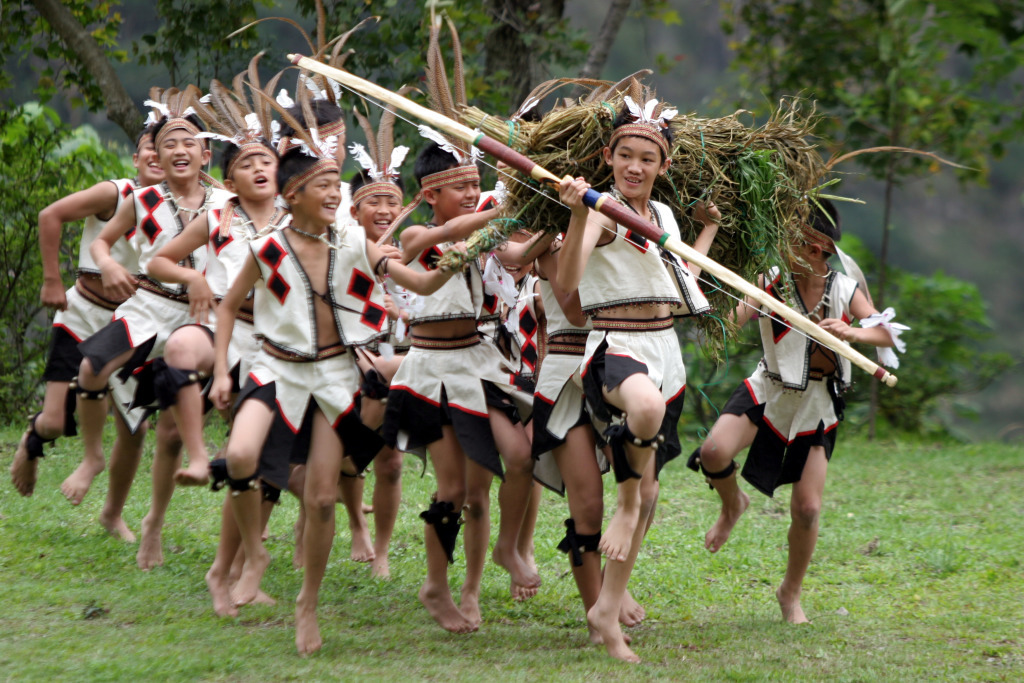
Truku Tribe Dancing